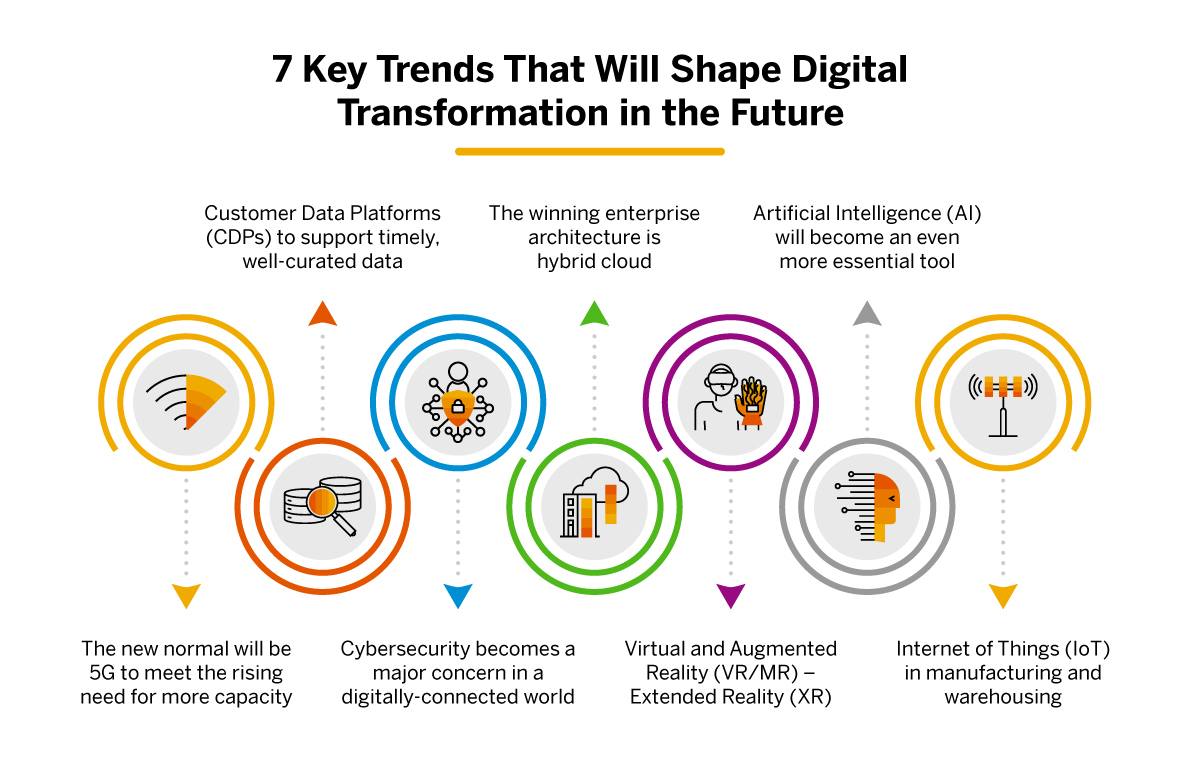Rarely does digital transformation happen at warp speed. The pandemic, however, ensured that organizations pivoted on technology from the way they worked to how they provided customer service within months.
Everything went digital. Broadly defined as the adoption of digital technologies in business to streamline processes and offer services to customers in a more digital way, digital transformation saw organizations bring about more automation; use bots for customer service; provide collaborative tools to enable work from anywhere for remote employees, etc. Businesses started to adopt disruptive technology to provide value to consumers while increasing revenue and productivity. Businesses began developing a digital presence to serve their audience as customers shifted to online platforms due to the pandemic-induced constraints.
And with the pervasive nature of digital transformation, many enterprise asset management software too made its presence felt in the market. Enterprise asset management (EAM) software helps firms buy, manage, and evaluate physical assets across various sectors. EAM services have been significant in assisting businesses in being flexible and resilient. In the wake of the pandemic, the corporate asset management system services-based software market has moved in tandem with the pace of digital transformation.t.
Digital transformation has a lot to offer this year, with technology becoming integrated everywhere and the shifting corporate landscape.
Here are the top seven trends that will shape Digital Transformation trends:
1. The New Normal Will Be 5G
For years, we’ve heard about the advantages of 5G. However, it wasn’t until last year that the demand for increased bandwidth and dependable connectivity became a real, tangible benefit that we could all understand.
In today’s world, digital is the standard, and businesses are attempting to run operations from their homes and other remote locations. While 4G has quickly gained acceptance in recent times, in the coming years, the 5G technology will acquire even more popularity. The 5G network can deliver relevant information and connection, meeting the rising need for more capacity and dependable connectivity. The adoption of 5G will lead to an increase in the demand for IoT connection, improve digital collaboration, and speed up digital transformation.
Our reliance on phones, tablets, and gadgets – which now include an ever-increasing number of IoT sensors – highlights the need for the multi-lane expressway that telecommunications companies predicted. Today, businesses can no longer afford to remain disconnected, and 5G deployments have become a critical answer component. In the coming years, the benefits of 5G will become increasingly popular as 5G is introduced in India and work from home becomes a norm for many rather than a pandemic-induced compulsion.
Also, the schools were able to function during the pandemic because of high-speed internet. Education will continue to adopt new technology faster, mainly as this implies access to learning for students located in the remotest and far-flung parts of the country. The requirement for learning is expected to remain after the pandemic and will contribute to the need for high-speed internet, i.e. 5G demand in the coming years.
2. CDP (Customer Data Platform)
Customer Data Platforms (CDPs) have picked up steam in recent months, and for a good reason. Data fragmented from numerous sources is famously difficult to arrange, which is inconvenient for businesses that rely on timely, well-curated data to function properly.
According to IBM, ‘poor data quality’ costs U.S. corporations $3 trillion every year; solving this issue has become a top concern for enterprises of all kinds.
The Customer Data Platform (CDP) is a comprehensive customer database that supports companies in consolidated data collecting, big data, processing, consolidation, activation, and execution from online and offline channels. This timely data coupled with AI and ML can help companies adapt to change in customer preferences at lightning speed.
3. Cybersecurity
Cybersecurity has emerged as a major concern in the aftermath of the pandemic. In a greatly digitally connected world where organizations allow employees to access data from secure outside networks, there is an increased risk of perimeter security being threatened.
Hackers have taken advantage of the coronavirus outbreak to extend their attacks on businesses across the world. As per the latest report by Purplesec, cybercrime is up 600%. As fewer employees work onsite on the same secure network, businesses must reinforce their networks and improve their cybersecurity protocols, spreading them to home networks and mobile work-from-home devices.
4. The Winning Enterprise Architecture is Hybrid Cloud
Businesses are progressively moving to a hybrid cloud architecture. Hybrid cloud enables enterprises to achieve the proper balance for their cloud infrastructure demands, ranging from SaaS apps and on-premise solutions to a combination of public and private clouds.
Large public cloud providers such as AWS, Azure, Google, IBM, and Oracle have made significant investments in hybrid during the last year. OEMs such as HPE, Dell (VMware), and Cisco are also investing more in developing solutions that make connecting on-premises data centers to the cloud far easier. These efforts aim to reach the customer where they are right now, taking on the problems of exponential data expansion while simultaneously being proactive on privacy, security, and compliance concerns. The modernized hybrid cloud model goes beyond traditional IT to include industrial applications.
5. Virtual and Augmented Reality (VR/MR) – Extended Reality (XR).
These terms refer to technology that projects computer-generated visuals directly into the user’s field of view via glasses or headsets. It is referred to as augmented reality (AR) when placed over what the user sees in the actual world. It’s VR when used to immerse the user in a completely computer-generated environment.
You may expect to see them, along with the other developments outlined. This will mostly include assisting us in avoiding potentially risky circumstances when viral transmission is a possibility. When we go through locations where the infection is known to have spread, AR technologies will provide real-time alerts. Simple steps such as reminding us to wash our hands when we touch a door handle in a public space could save lives and prevent us from spreading infection throughout the real-world environments we inhabit and move through.
6. Artificial Intelligence (AI)
AI is one of the biggest tech developments right now, and it will become an even more essential tool for interpreting and comprehending the world around us in 2022. The amount of information we gather on healthcare, infection rates, and the effectiveness of contamination strategies will continue to grow. This means that the answers that machine learning algorithms scoop will grow more educated and involved.
Understanding new behavioral patterns will be an essential need for businesses. From shopping and socialization to virtual working environments, meetings, and recruiting, more human activity will occur online. The tools used to study behavioral trends are expected to continue to be in demand the next year.
7. IoT
Innovation driven by the Internet of Things (IoT) technology has become one of the cornerstones of competitive differentiation. From healthcare and manufacturing to retail and SCLM, the pace at which companies are driving innovation-based IoT has drastically increased in the wake of the pandemic. While connected devices will continue to be popular due to the convenience involved, wearable electronics to monitor health; IIoT in manufacturing; IoT in warehousing will be areas of focus going forward.

Conclusion
The ways organizations operate will continue to change as they increase digital transformation initiatives. According to the PwC survey in the US, more than half of CEOs want to increase their technology investment by 10% or more to strengthen digital transformation services. These trends are applicable to India as well.

Digital transformation impacts every level of a business and brings data from many departments together to collaborate more efficiently. Improving customer experience is one of the biggest benefits of digital transformation. Tech-savvy customers want a positive experience across various channels, including mobile applications, social media, email, and live chat. Digital changes will also impact customer experiences.
Digital transformation also enables new data-driven models for asset management systems and procedures like Asset as a Service (AaaS) and Maintenance as a Service (MaaS). AaaS allows you to represent assets (both tangible and intangible) in a digital format. The latter provides for the execution of digitally enabled functions in order to improve them (for example, lowering maintenance and repair costs based on simulations and digital twins).
To understand the changing landscape and emerging trends, you need a partner who understands the technology and can help your business succeed. If you have the right partner on your side, you can expect the changing landscape to work for you. With SAP Enterprise Asset Management (EAM) software, you can be assured of a reliable partner to help you benefit from emerging trends.



